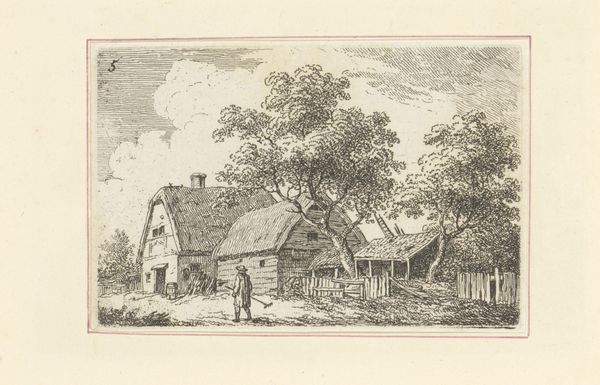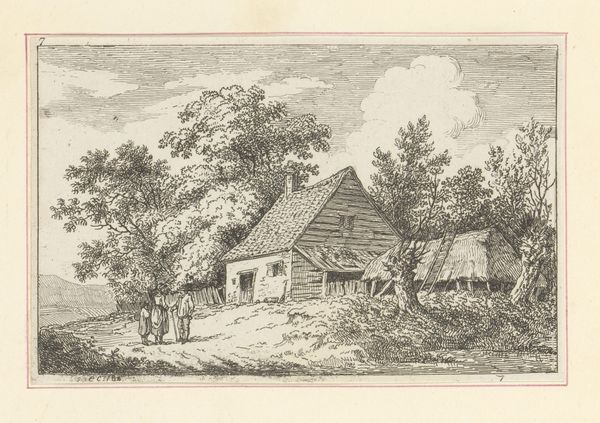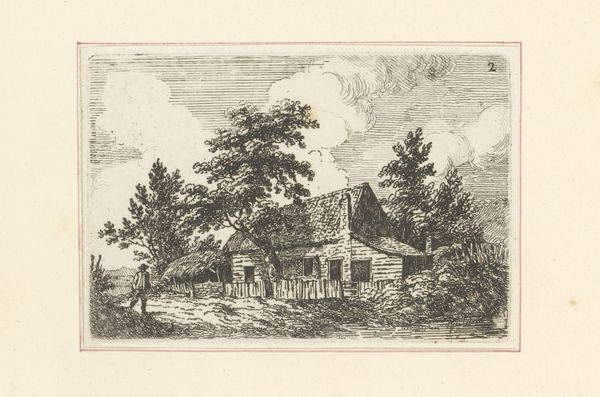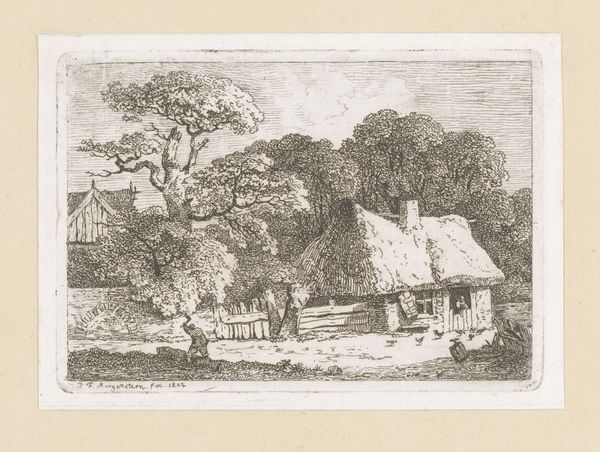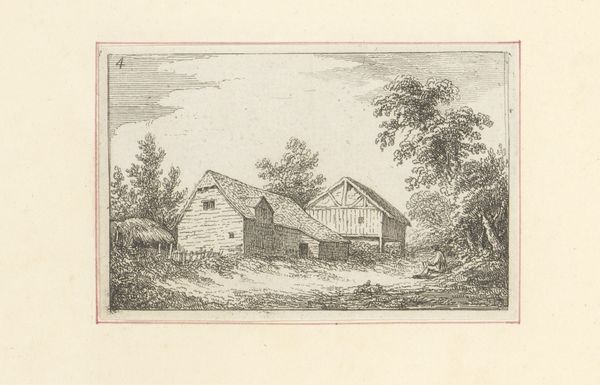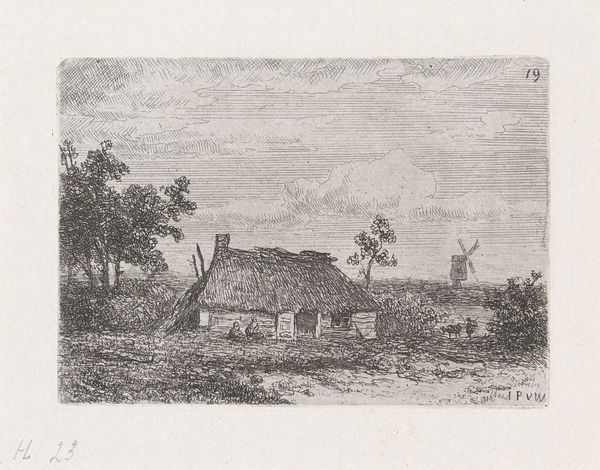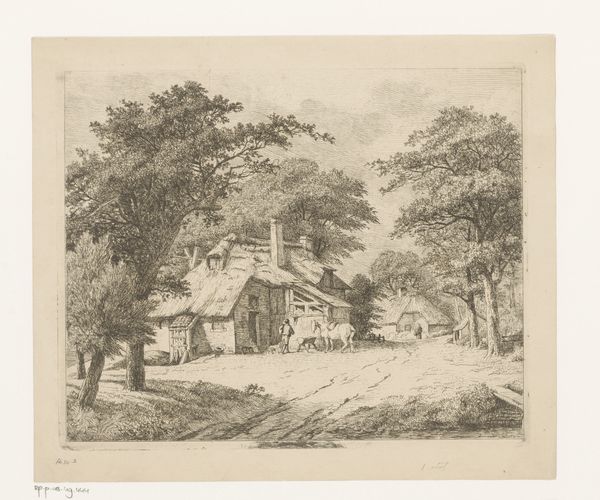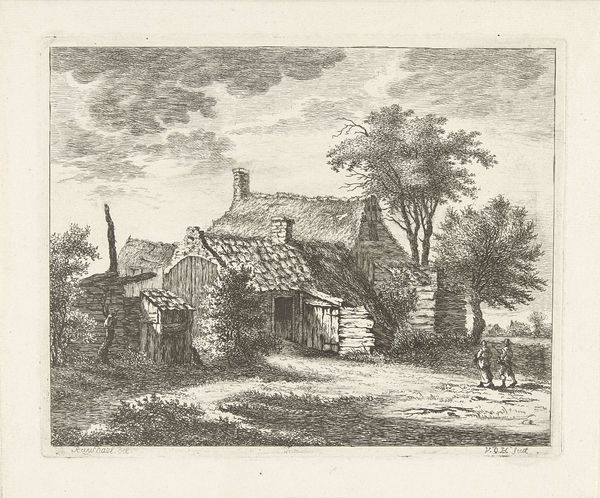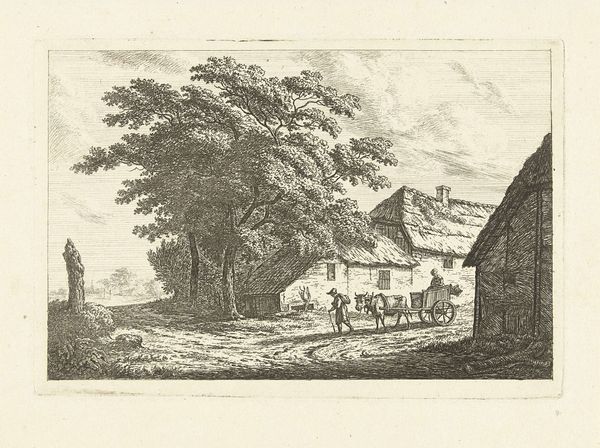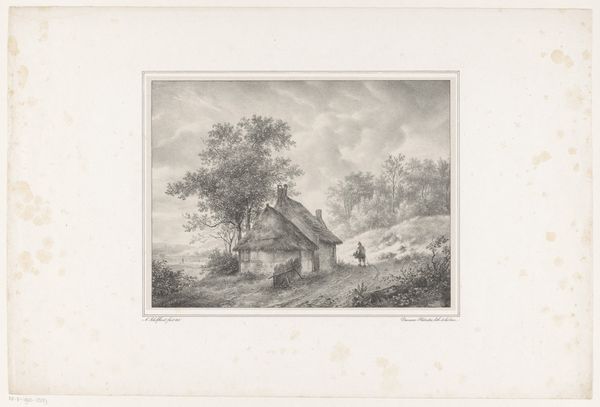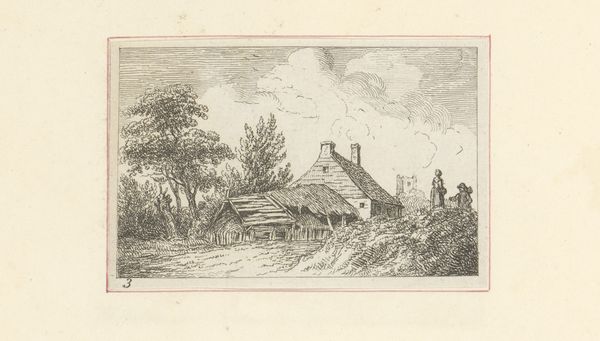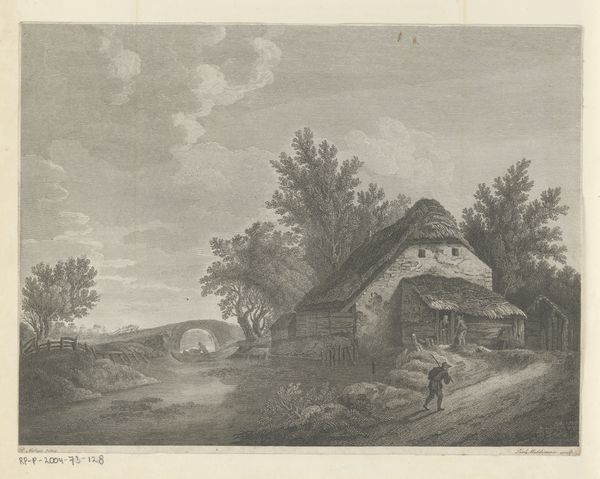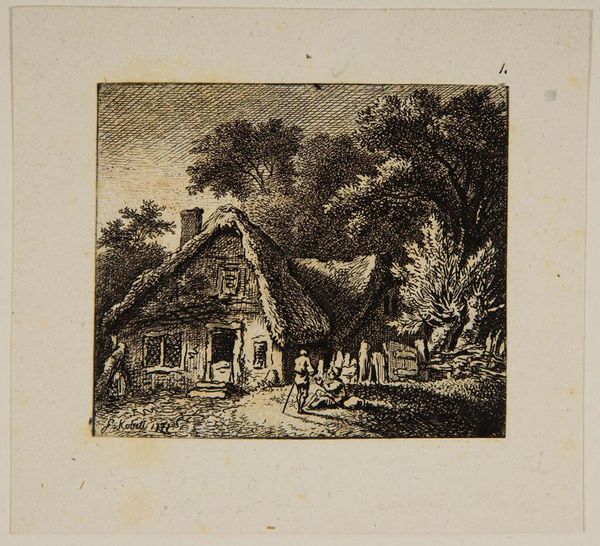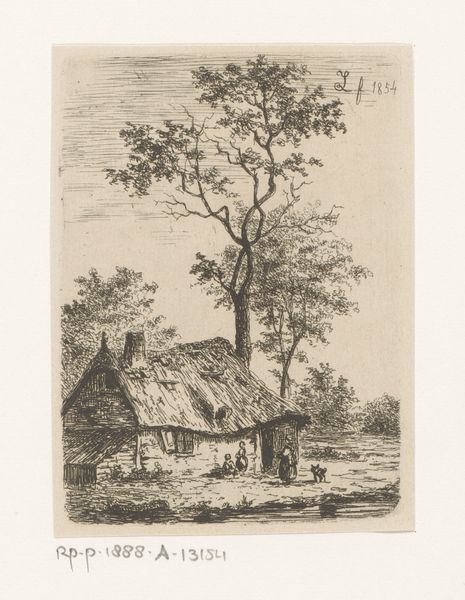
drawing, print, etching, pen, engraving
#
drawing
#
neoclacissism
# print
#
pen sketch
#
etching
#
pencil sketch
#
old engraving style
#
landscape
#
line
#
pen work
#
sketchbook drawing
#
pen
#
academic-art
#
engraving
Dimensions: height 61 mm, width 91 mm
Copyright: Rijks Museum: Open Domain
Editor: Here we have "Landscape with resting figures by a barn, a house," made between 1785 and 1790 by Edward Edwards. It's a print made using engraving and etching techniques. I’m struck by its quiet, almost melancholic mood. What do you see in this piece, especially given the historical context? Curator: What I immediately notice is the pastoral symbolism; the cottages and figures evoke a yearning for a simpler, perhaps idealized past. The landscape tradition itself carries emotional weight—how it's shaped by human presence and how it reflects our own internal landscapes. Given that it’s neo-classical, does the rendering remind you of something? Editor: I can see how it evokes a sort of idealized past. And, I suppose the etching and engraving reminds me of classical drawings in a way. How does the idea of cultural memory apply to this landscape? Curator: Well, the landscape isn’t just scenery; it's a stage for human experience, embodying centuries of stories and associations. Think about how rural life was perceived in the late 18th century, especially with the rise of industrialization. The figures resting, almost blending with the landscape, could be seen as a potent symbol of longing for a pre-industrial, harmonious existence. Do you think the artist is really yearning or just depicting the pastoral world that’s being pushed aside? Editor: I think both is true. I never considered that maybe it could be doing two things at once. Thanks, this makes me want to consider these images more deeply. Curator: Yes, how imagery helps us engage with cultural memories and our own relationship with symbols over time. Now I'm thinking of different questions, so let's talk about this again soon!
Comments
No comments
Be the first to comment and join the conversation on the ultimate creative platform.
